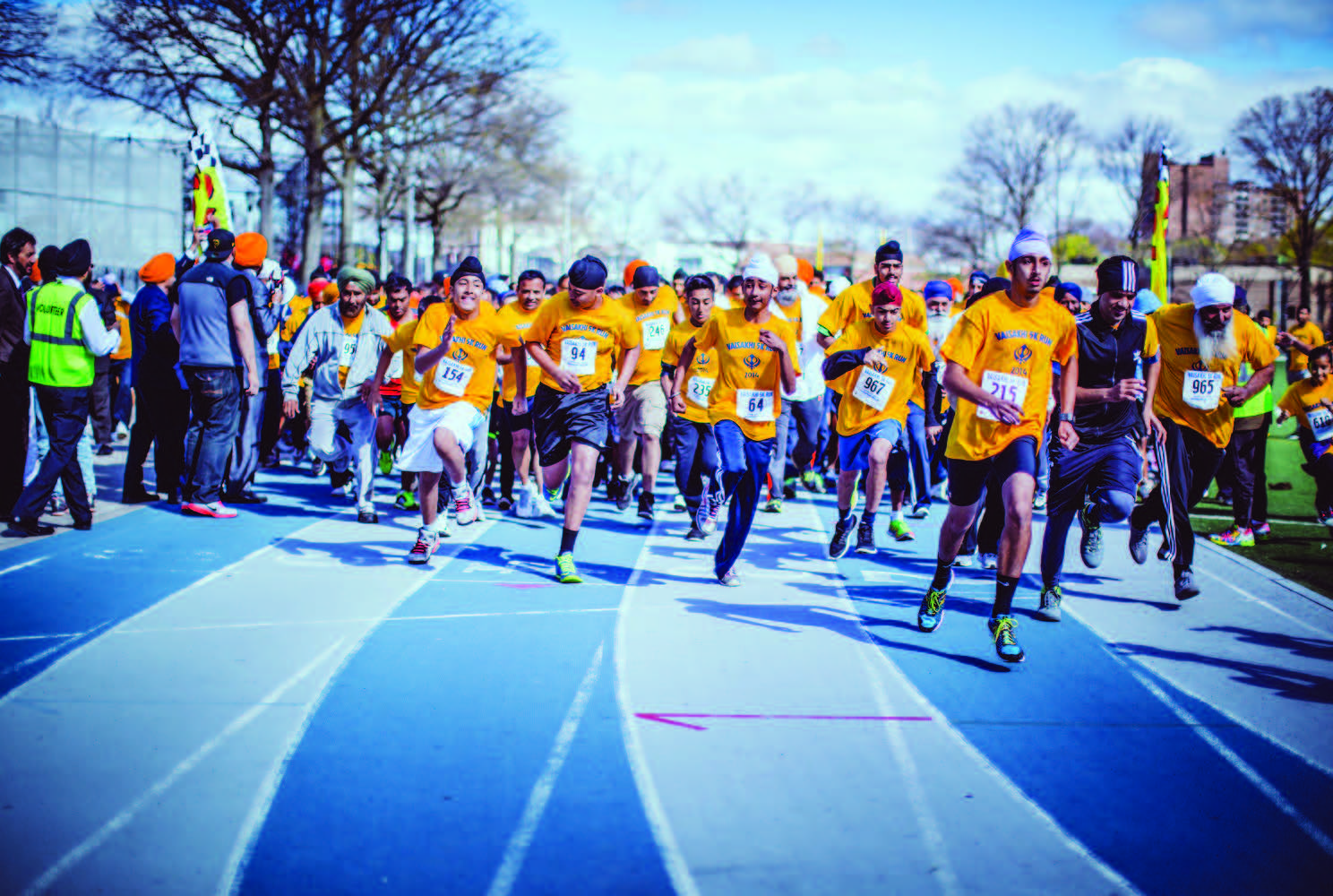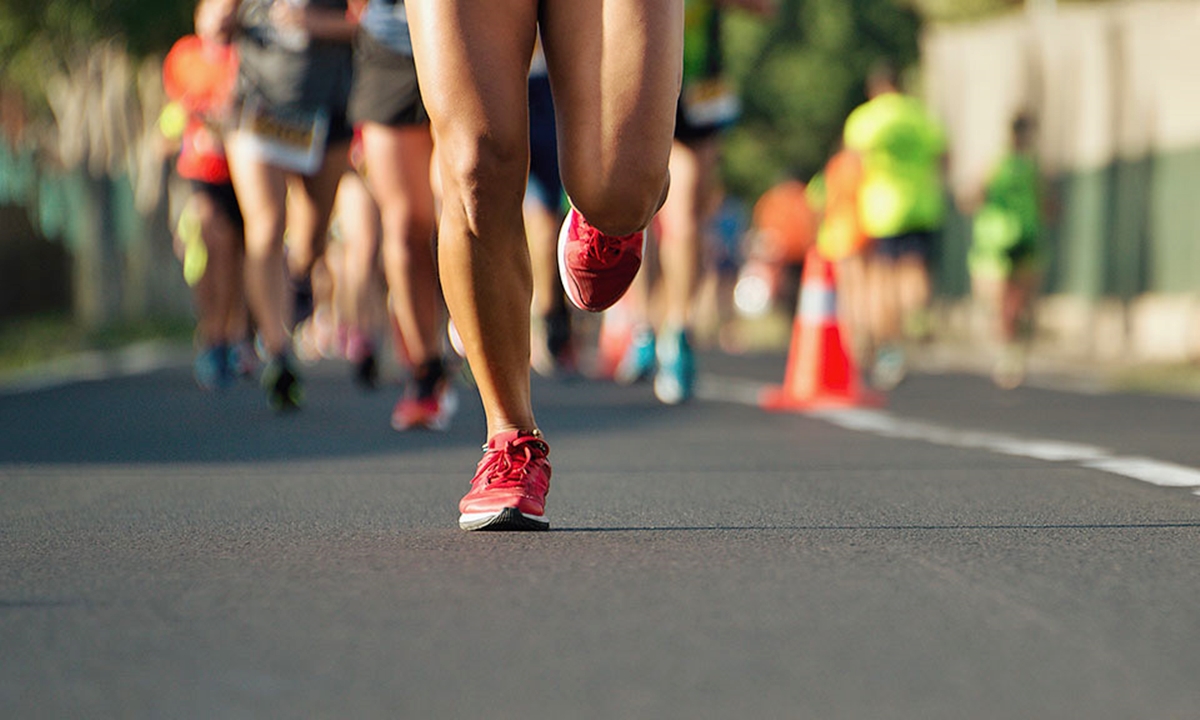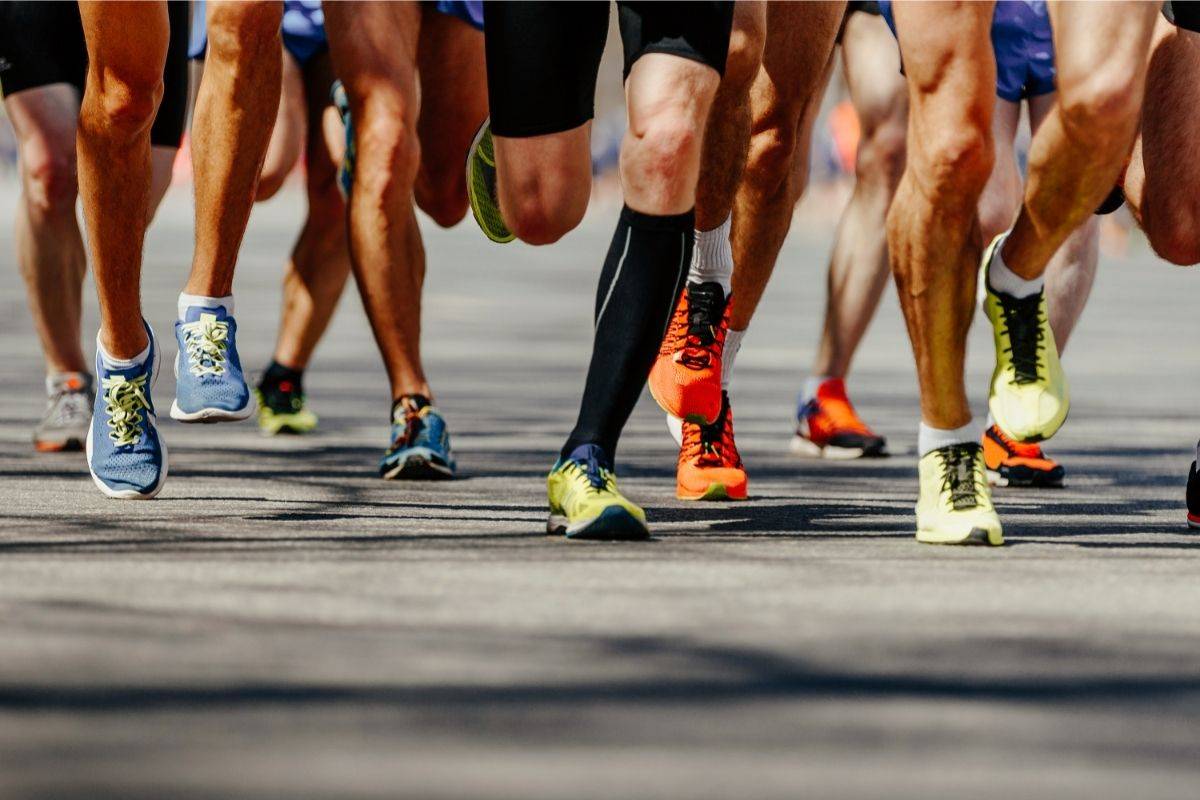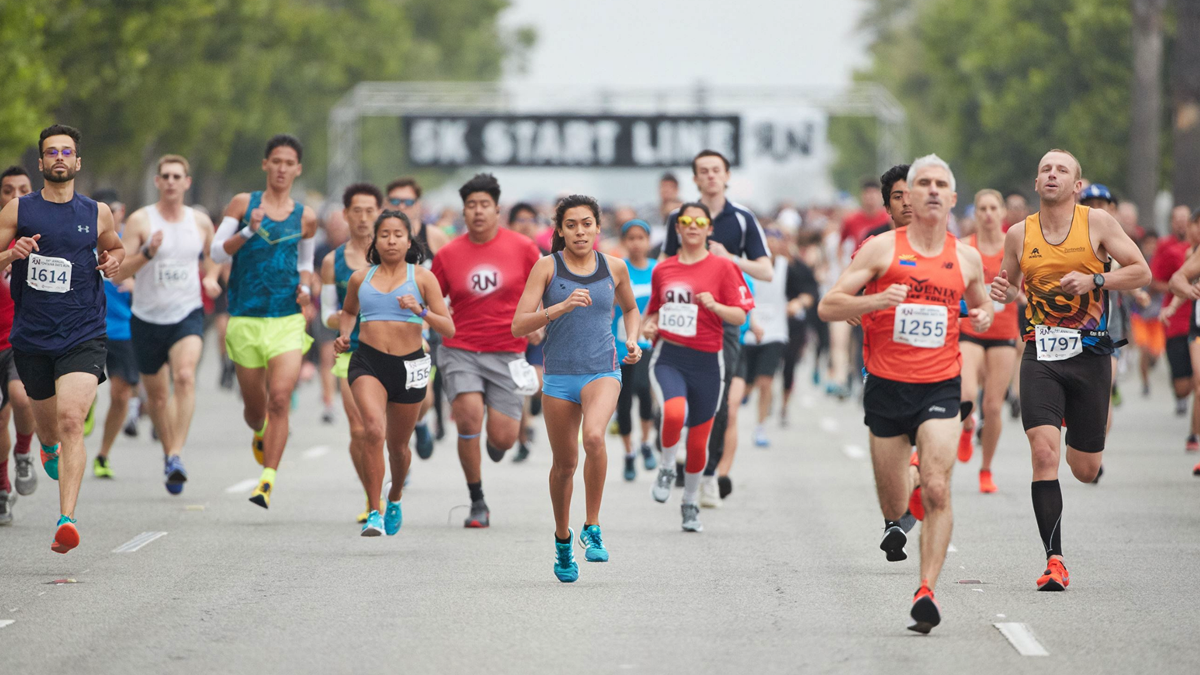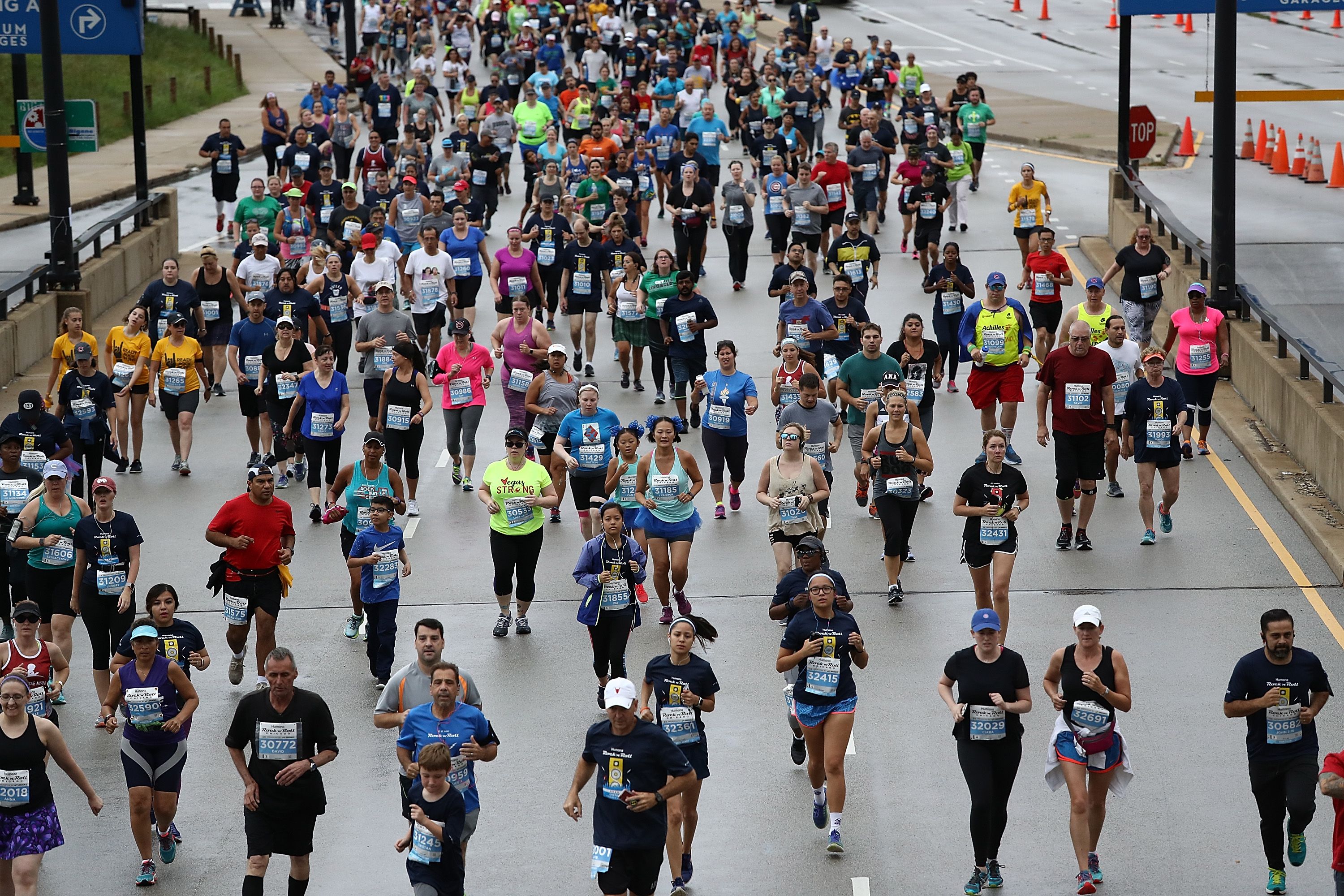

Featured
What Is The Quickest 5K Run
Modified: August 21, 2023
Discover the secrets to achieving your fastest 5K run with our featured training program. Boost your speed and crush your goals with expert tips and strategies.
Introduction
Welcome to the world of 5K running, where speed and endurance combine for an exhilarating race experience! Whether you are a beginner looking to complete your first 5K or a seasoned runner aiming for a new personal best, improving your speed is a common goal. Running a quick 5K requires a balanced approach that encompasses both physical and mental preparation.
Why is the 5K distance so popular? Well, it strikes a perfect balance between challenging your limits and being achievable for runners of all levels. A 5K run covers a distance of 5 kilometers, or approximately 3.1 miles, making it a manageable goal for most individuals. It’s a fantastic starting point for those who have recently taken up running or for those seeking to improve their running performance.
In this article, we will explore tips and strategies for running the quickest 5K possible. From essential warm-up exercises to proper running technique, from training plans to nutrition and mental strategies, we will cover all aspects of preparing for an impressive 5K run. So, let’s lace up our running shoes and dive into the world of speed and endurance!
Understanding the 5K Run
Before we dive into the strategies for running a quick 5K, it’s important to understand the nature of this popular race distance. A 5K run, also known as a 5K race, covers a distance of 5 kilometers, which is approximately 3.1 miles. It is one of the most common race distances in the running community and attracts participants of all ages and fitness levels.
- 1. Length: The 5K distance strikes a balance between being challenging and achievable for most runners. It is long enough to test your endurance and speed, but not so long that it becomes overwhelming.
- 2. Time Requirement: Completing a 5K run can take anywhere from 15 minutes to 60 minutes, depending on your fitness level and running pace.
- 3. Race Atmosphere: 5K races often have a lively and supportive atmosphere, with cheering spectators and fellow runners motivating each other to push their limits.
Whether you are participating in a local charity run, a fun run with friends, or a competitive race, the 5K distance provides a unique blend of physical exertion and adrenaline-filled excitement.
For those new to the world of running, a 5K race offers the perfect opportunity to set a goal and work towards achieving it. Many people find the sense of accomplishment and the rush of finishing a 5K incredibly rewarding.
Even experienced runners use the 5K distance as a benchmark to gauge their fitness and measure their progress. It serves as a valuable indicator of overall running performance and can be used to plan and adjust training regimens.
By understanding the nature of the 5K run and what it entails, you can better prepare yourself for the physical and mental challenges you may encounter along the way. In the next sections, we’ll delve into specific tips and strategies to help you achieve your quickest 5K run ever.
Tips for Preparing for the Quickest 5K Run
Preparing for a quick 5K run requires a combination of physical training, mental preparation, and smart planning. Follow these tips to optimize your performance and achieve your fastest time:
- 1. Set a Goal: Start by setting a specific time goal for your 5K run. Having a target time in mind will help you tailor your training and stay focused during the race.
- 2. Build a Training Plan: Create a structured training plan that incorporates a mix of speed work, endurance training, and rest days. Gradually increase your mileage and intensity to improve your running efficiency and stamina.
- 3. Incorporate Interval Training: Interval training involves alternating between high-intensity running and periods of active recovery. This type of training improves your cardiovascular fitness, speed, and stamina.
- 4. Include Variety in Your Workouts: Don’t limit yourself to only running. Cross-training activities such as cycling, swimming, or strength training can enhance your overall fitness and prevent injury.
- 5. Practice Tempo Runs: Tempo runs involve running at a comfortably hard pace for an extended period. This helps improve your lactate threshold and trains your body to sustain a faster pace for longer periods.
- 6. Prioritize Rest and Recovery: Allow ample time for rest and recovery between workouts. Your body needs time to repair and rebuild muscles, which ultimately leads to improvement in performance.
- 7. Consider Hill Training: Incorporate hill repeats into your training routine to build strength and power. Hills will challenge your muscles and improve your overall running economy.
- 8. Prepare Mentally: Develop mental strategies to stay focused and motivated during the race. Visualize yourself achieving your goal time and practice positive self-talk to overcome challenges.
- 9. Get Proper Gear: Invest in a good pair of running shoes that suit your foot type and running style. Additionally, dress comfortably for the weather conditions to ensure optimal performance.
- 10. Practice Race Day Nutrition: Experiment with different pre-race meals and energy-boosting snacks to find what works best for you. Stay properly hydrated before, during, and after the race.
Remember, consistency is key when preparing for a quick 5K run. Stick to your training plan, listen to your body, and make adjustments as needed. With proper preparation and determination, you’ll be well on your way to achieving your quickest 5K time.
Warm-up Exercises for a Faster 5K Run
A proper warm-up is essential for preparing your body for the physical demands of a fast-paced 5K run. It helps increase blood flow to your muscles, improves flexibility, and mentally prepares you for the race ahead. Incorporate these warm-up exercises into your routine to maximize your performance:
- 1. Dynamic Stretching: Dynamic stretches involve moving parts of your body through a full range of motion. Perform exercises such as walking lunges, leg swings, arm circles, and high knees to loosen up your muscles and joints.
- 2. Jogging or Light Running: Start with a light jog or slow run for 5-10 minutes. This gradually increases your heart rate, warms up your muscles, and prepares your cardiovascular system for more intense exercise.
- 3. Mobility Exercises: Focus on mobility exercises that target your hips, glutes, and lower back. Examples include hip circles, leg swings, and torso rotations. These exercises improve your range of motion and decrease the risk of injury.
- 4. Plyometric Drills: Incorporate plyometric exercises like jump squats, high knee skips, and bounding to activate your fast-twitch muscle fibers and boost explosive power. These drills simulate the dynamic movements involved in running at a faster pace.
- 5. Strides: Perform a few short, fast sprints known as strides to further warm up your muscles and practice running at race pace. Start with a controlled acceleration and gradually build up to your target race pace. Focus on maintaining good form and relaxed breathing.
- 6. Mental Preparation: Warm up your mind as well by focusing on positive affirmations and envisioning a successful race. Clear any pre-race jitters and anxiety by taking a few deep breaths and visualizing yourself running strong and confidently.
Remember, the purpose of a warm-up is to prepare your body for high-intensity exercise without causing fatigue. The duration and intensity of your warm-up may vary depending on your preferences and the weather conditions. Make sure to listen to your body and adjust as needed.
By incorporating these warm-up exercises into your pre-5K routine, you’ll optimize your readiness for a faster race. Your muscles will be primed, your joints will be lubricated, and your mind will be focused, setting the stage for your best performance.
Proper Running Technique for a Faster 5K Run
Having the right running technique is crucial for improving your speed and efficiency during a 5K race. By focusing on proper form, you can optimize your stride, conserve energy, and minimize the risk of injury. Here are some key elements to keep in mind:
- 1. Posture: Maintain an upright posture with your head aligned with your spine. Avoid leaning too far forward or backward as this can negatively affect your balance and efficiency.
- 2. Arm Position: Keep your arms relaxed and bent at a 90-degree angle. Swing them naturally back and forth, avoiding any excessive side-to-side movement. Your arms act as counterbalances to your legs, helping you maintain stability and generate forward momentum.
- 3. Footstrike: Aim for a midfoot or forefoot strike rather than heel striking. This helps distribute the impact forces more evenly and enhances your propulsion. Focus on landing softly and quietly, with your foot directly underneath your body.
- 4. Cadence: Strive for a higher cadence, which refers to the number of steps you take per minute. Increasing your cadence can help improve your stride efficiency and reduce the risk of overstriding, which can lead to injuries.
- 5. Breathing: Practice rhythmic breathing patterns to ensure adequate oxygen supply to your muscles. Inhale through your nose and exhale through your mouth in a steady and controlled manner. Find a breathing pattern that works for you and matches your pace.
- 6. Core Engagement: Engage your core muscles by gently contracting your abdominal muscles. This helps maintain stability and efficient movement, reducing unnecessary energy expenditure.
It’s important to note that everyone’s running technique may vary slightly based on individual biomechanics and comfort. Experiment with different techniques and listen to your body to find what works best for you.
Additionally, incorporating strength and flexibility exercises into your training routine can improve your running form. Focus on strengthening your core, hips, and legs, as well as stretching key muscle groups to maintain good range of motion.
Lastly, remember to practice proper running technique during your training runs and gradually integrate it into your race pace. Consistency and mindful execution of proper form will help you become a more efficient and faster runner.
Training Plan to Improve Your 5K Run Speed
Improving your 5K run speed requires a structured training plan that focuses on building both your endurance and your speed. By following a well-rounded training plan, you can gradually increase your fitness level and achieve your desired race pace. Here’s a sample training plan to help you improve your 5K run speed:
- 1. Base Building Phase: Begin by establishing a solid base of running mileage. This phase focuses on building your aerobic endurance and stamina. Aim for 3-4 runs per week, gradually increasing your overall mileage over the course of 4-6 weeks.
- 2. Interval Training: Incorporate interval training into your routine to improve your speed. This involves alternating between intense bursts of speed and periods of active recovery. Start with shorter intervals (e.g., 400 meters) and gradually increase the distance and intensity over time.
- 3. Tempo Runs: Include tempo runs in your training plan to improve your lactate threshold and running efficiency. During a tempo run, maintain a comfortably hard pace for a sustained period. Start with shorter tempo runs and gradually increase the duration over time.
- 4. Hill Training: Add hill workouts to your training regimen to build strength and power. Find a hill with a moderate incline and incorporate uphill sprints or hill repeats. This type of training will strengthen your leg muscles and improve your overall running economy.
- 5. Long Runs: Don’t neglect your long runs, even when training for a shorter distance like a 5K. Long runs improve your endurance and mental fortitude. Aim for a weekly long run that gradually increases in distance, peaking a couple of weeks before your race.
- 6. Cross-Training: Supplement your running with cross-training activities such as cycling, swimming, or strength training. This helps prevent overuse injuries, improves overall fitness, and provides a break from the repetitive nature of running.
- 7. Rest and Recovery: Allow for adequate rest days in your training plan to allow your body to recover and adapt to the training stimulus. Rest is just as important as the actual training in order to avoid burnout and reduce the risk of injuries.
Remember, it’s important to gradually increase the intensity and volume of your training to avoid overtraining and minimize the risk of injuries. Listen to your body, and if you experience any pain or discomfort, adjust your training accordingly.
Additionally, consider working with a running coach or joining a running group to get personalized guidance and support throughout your training journey.
By following a structured training plan and staying consistent with your workouts, you’ll be well on your way to improving your 5K run speed and achieving your desired race time.
Essential Nutrition for a Quicker 5K Run
Proper nutrition plays a vital role in supporting your training and enhancing your performance during a 5K run. Fueling your body with the right nutrients before, during, and after your run can help optimize your energy levels, improve recovery, and maximize your speed. Here are some essential nutrition tips for a quicker 5K run:
- 1. Carbohydrates: Prioritize carbohydrates as they are the primary source of fuel for your muscles. Include complex carbohydrates such as whole grains, fruits, vegetables, and legumes in your diet. They provide sustained energy and can enhance your endurance during the race.
- 2. Protein: Protein is important for muscle repair and recovery. Include lean sources of protein such as poultry, fish, tofu, legumes, and dairy in your meals to support muscle development and help repair any micro-damage caused by training.
- 3. Hydration: Proper hydration is crucial for performance. Drink plenty of fluids throughout the day and pay attention to your fluid intake before, during, and after your run. Aim to consume water and electrolyte-containing beverages to replace the fluids lost through sweat.
- 4. Pre-Run Fuel: Consume a balanced meal or snack containing both carbohydrates and a moderate amount of protein 2-3 hours before your run. This will give your body enough time to digest and provide a steady source of energy during the race.
- 5. During-Run Fuel: For a 5K distance, you may not need fuel during the race if you have properly fueled beforehand. However, if you feel the need for a boost, consider consuming a small amount of easily digestible carbohydrates, such as a gel or sports drink, halfway through the race.
- 6. Post-Run Recovery: After your run, replenish your energy stores and promote muscle recovery by consuming a snack or meal containing both carbohydrates and protein. This will assist in repairing muscle tissue and replenishing glycogen levels.
- 7. Supplementation: While it’s generally best to get your nutrients from whole foods, certain supplements can aid in performance and recovery, such as electrolyte tablets, omega-3 fatty acids, or vitamin D. Consult with a healthcare professional or registered dietitian to determine if supplementation is necessary for you.
Remember, it’s important to listen to your body and find what works best for you. Experiment with different foods and meal timings during your training to determine your optimal nutrition strategy for race day.
Lastly, nutrition is not just limited to the time surrounding your run. Maintain a well-balanced diet throughout your training period, ensuring you’re getting adequate nutrients to support your overall health and well-being.
By prioritizing proper nutrition and fueling your body with the right nutrients, you’ll have the energy and stamina to conquer your 5K race and achieve your best performance.
Mental Strategies to Boost Your 5K Run Performance
Running a 5K requires not just physical strength but also mental fortitude. Whether you’re aiming for a personal best or simply looking to push through your limits, training your mind is essential for a strong performance. Here are some effective mental strategies to boost your 5K run performance:
- 1. Goal Setting: Set clear and specific goals for your 5K run. Having a target time or performance goal can provide you with a sense of purpose and motivation throughout your training and race day.
- 2. Visualization: Use the power of visualization to imagine yourself running strong and achieving your goals. Visualize crossing the finish line with a smile and a sense of accomplishment. See yourself overcoming any obstacles or challenges that may arise during the race.
- 3. Positive Self-Talk: Pay attention to your inner dialogue and replace negative thoughts with positive affirmations. Instead of focusing on doubts or fatigue, remind yourself of your training, your strength, and your ability to overcome any obstacles.
- 4. Break the Race into Smaller Segments: Mentally divide the race into smaller segments or checkpoints. Focus on reaching and conquering each segment rather than thinking about the entire distance at once. This helps manage any feelings of overwhelm and keeps you focused on the present moment.
- 5. Find Your Mantra: Develop a mantra or positive phrase that resonates with you. Repeat it to yourself during challenging moments of the race to stay motivated and strengthen your mental resilience. Examples include “I am strong and capable” or “I can do this.”
- 6. Focus on Technique: Direct your attention to your running form and technique during the race. Concentrate on maintaining good posture, breathing rhythmically, and keeping a steady pace. This helps distract your mind from fatigue and improves your overall efficiency.
- 7. Embrace Discomfort: Accept that running a 5K, especially at a faster pace, will be physically and mentally demanding. Embrace the discomfort and remind yourself that it’s a natural part of pushing your limits. Embracing the discomfort can help you stay mentally strong and maintain your determination.
- 8. Practice Mindfulness: Stay in the present moment during the race by practicing mindfulness. Focus on your breathing, the sensation of your feet hitting the ground, and the sounds around you. This helps quiet your mind and maintain focus.
Remember, mental strength is just as important as physical strength when it comes to running a successful 5K. Incorporate these strategies into your training and race day routine to optimize your mental performance and achieve your goals.
Injury Prevention and Recovery for a Fast 5K Run
When training for a fast 5K run, it’s crucial to prioritize injury prevention and ensure proper recovery to maintain your progress and avoid setbacks. Here are some important tips to help you stay injury-free and recover effectively:
- 1. Gradual Progression: Avoid sudden increases in mileage or intensity. Gradually progress your training by following the 10% rule, which suggests not increasing your weekly mileage or intensity by more than 10% from one week to the next.
- 2. Strengthening and Conditioning: Incorporate strength and conditioning exercises into your training routine. Strengthening your core, hips, and leg muscles can improve your running biomechanics and help prevent common running injuries.
- 3. Cross-Training: Engage in cross-training activities to provide variety and reduce the repetitive impact on your running muscles and joints. Options like swimming, cycling, or yoga can build aerobic fitness and improve muscular balance.
- 4. Adequate Rest and Recovery: Allow for rest days in your training schedule to give your body time to recover and repair itself. Listen to your body and take additional rest days when needed to prevent overuse injuries.
- 5. Proper Nutrition: Fuel your body with a balanced diet to support optimal recovery. Consuming sufficient protein, carbohydrates, and healthy fats promotes tissue repair and enhances glycogen replenishment.
- 6. Quality Sleep: Prioritize adequate sleep to optimize recovery and support overall health. Aim for 7-9 hours of uninterrupted sleep each night to help your body repair and rebuild from the demands of training.
- 7. Listen to Your Body: Pay attention to any warning signs or discomfort during training. Pain, excessive fatigue, or abnormal soreness can be indicators of an underlying issue. If experiencing persistent pain, it’s important to seek professional advice.
- 8. Injury Treatment and Rehabilitation: If injured, seek appropriate treatment from a healthcare professional experienced in sports injuries. Follow the prescribed treatment plan and engage in rehabilitation exercises to optimize recovery.
- 9. Warm-up and Cool-down: Prioritize a thorough warm-up before each run and a proper cool-down afterward. Dynamic stretching, mobility exercises, and foam rolling can help prepare your muscles for exercise and improve flexibility.
- 10. Listen to Your Mind: Mental fatigue and stress can increase the risk of injury. Take time for self-care activities such as meditation, yoga, or engaging in hobbies you enjoy to alleviate stress and promote mental well-being.
Remember that injury prevention and recovery are ongoing processes throughout your training journey. Be vigilant, proactive, and prioritize self-care to ensure a healthy and successful 5K running experience.
Conclusion
Congratulations! You are now equipped with a comprehensive understanding of the strategies and techniques that can help you run a quicker 5K. By focusing on both physical and mental aspects of training, you can optimize your performance and achieve your desired race time.
Throughout this article, we explored various key elements of preparing for a fast 5K run. From understanding the 5K distance and setting goals to implementing warm-up exercises, proper running technique, and essential nutrition, each aspect plays a crucial role in your success.
Additionally, we discussed the importance of mental strategies to boost your performance and maintain a positive mindset. Training your mind is just as important as training your body when it comes to achieving your running goals.
Lastly, we emphasized injury prevention and recovery as an integral part of your training plan. By taking steps to prevent injuries and implementing proper recovery practices, you can avoid setbacks and stay on track toward your goals.
Now, it’s time to put these strategies into action. Lace up your running shoes, embrace the challenge, and enjoy the exhilarating journey of training for a fast 5K run. Remember, progress takes time, so be patient and consistent in your training. Celebrate every milestone along the way, and most importantly, enjoy the thrill of running!
